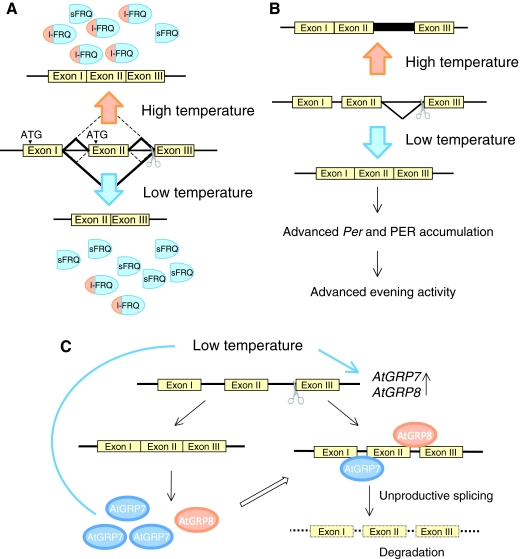Fig. 4.
Temperature-regulated alternative splicing of clock genes. (A) Temperature-sensitive splicing of frq. At low temperature, splicing at the non-canonical splice sites becomes dominant, leading to higher levels of expression of short-FRQ (sFRQ). At higher temperature, the canonical splicing site dominates, leading to higher levels of long-FRQ (l-FRQ) expression. (B) Temperature-sensitive splicing of Drosophila Per. There are two transcript forms of Per; one includes an intron sequence in the 3′-UTR and the other does not. Even though this difference does not alter the protein structure of PER, this splicing promotes the earlier accumulation of Per and PER, and advances the evening locomotor activity of fly. This might be a mechanism for adjustment to winter time, in which the temperature is lower and the photoperiod is shorter. (C) Autoregulation of AtGRP7 and AtGRP8 expression. AtGRP7 and AtGRP8 mRNAs are both induced by cold temperature. The protein level of AtGRP7, but not AtGRP8, is also increased by the cold temperature. Both AtGRP7 and AtGRP8 interact with their pre-mRNA, and promote the splicing that yields aberrant mRNA. As a consequence, these abnormal RNAs are degraded rapidly in the cell.

